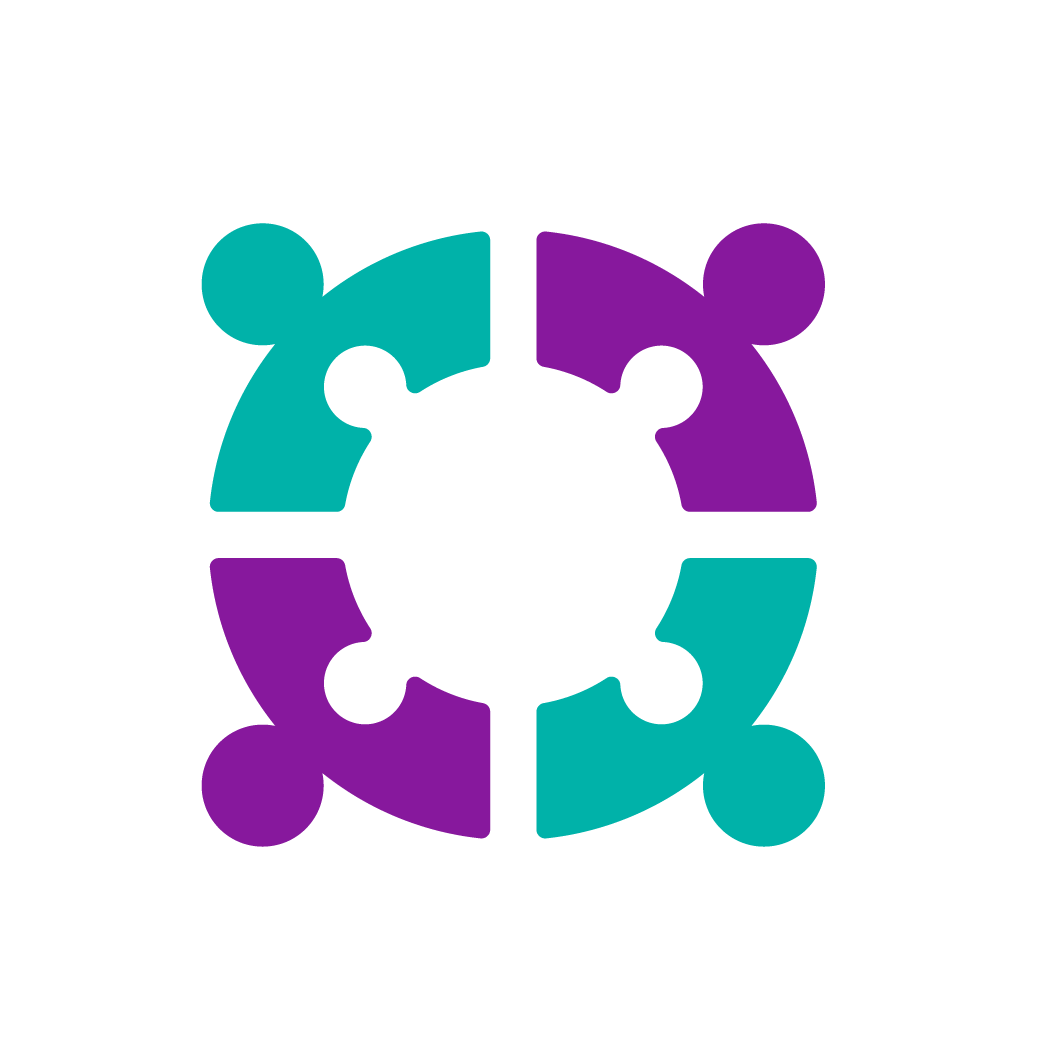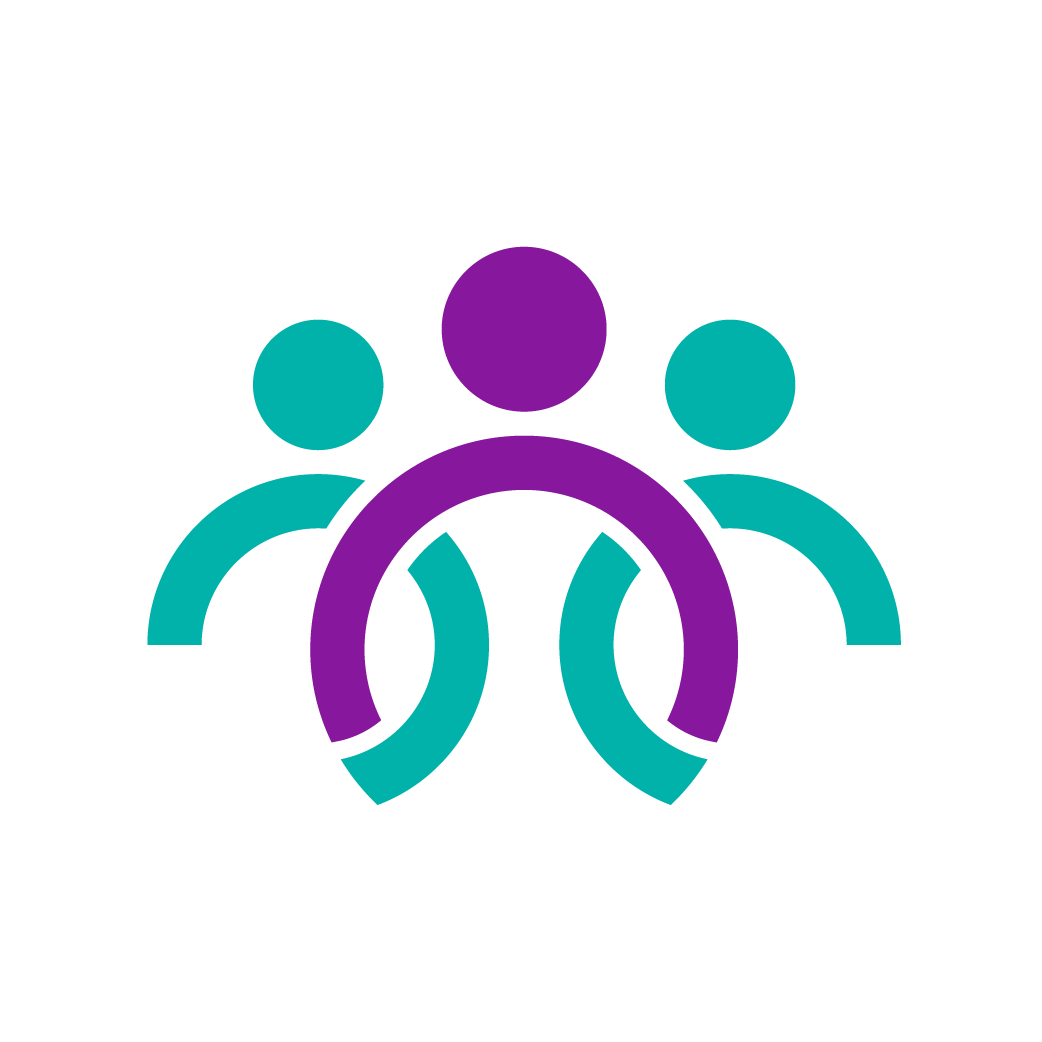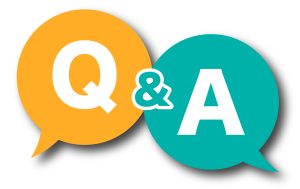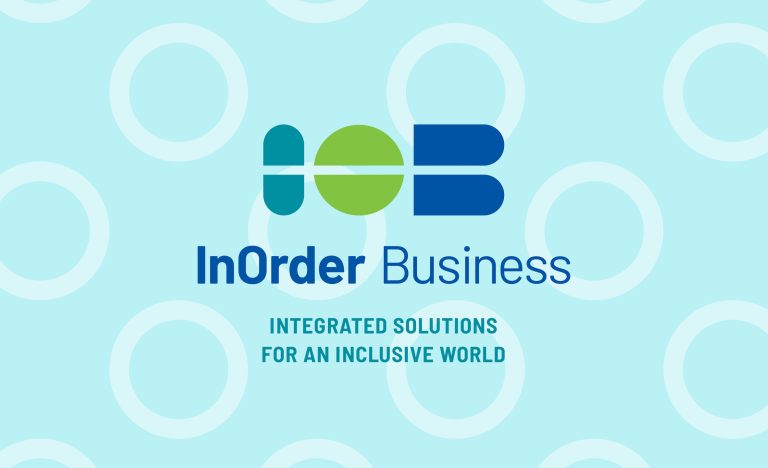A master communications plan and a content calendar help unify voice and visuals across social media, email, web, and print. Tailor content to each channel while maintaining alignment with your core messaging framework.
From vision to reality
Every mission deserves a clear and compelling path forward. Our expertise spans strategy, brand, digital, and print—ensuring that every communication touchpoint works in harmony to amplify your impact. By weaving together thoughtful design and mission-driven insights, we deliver solutions that not only resonate but also enable organizations to connect deeply with their audiences and drive lasting change.
![]()
Strategy
Every impactful journey begins with a well-defined strategy. We collaborate closely with nonprofits and social enterprises to craft tailored approaches in branding, marketing, communications, and digital presence, ensuring each initiative aligns seamlessly with your mission and goals.
![]()
Brand
Your brand embodies your organization’s essence. We develop comprehensive brand strategies, including naming and identity systems, to authentically and memorably convey your mission, fostering trust and recognition among your audience.
![]()
Digital
In an increasingly digital world, we leverage the latest technologies to enhance your online presence while ensuring accessibility for all. Our expertise spans information architecture, web development, email marketing, and social media strategies—all designed to amplify your mission’s reach, impact, and inclusivity.
![]()
Print
While digital communication leads the way, the impact of print remains timeless. We craft visually striking printed materials and offer strategic guidance on their best use, ensuring they seamlessly complement and elevate your mission-driven initiatives.
Our proven process
Our proven approach is designed for impact, beginning with a deep understanding of your vision, values, and the unique value you bring. Through a collaborative, compassion-driven process, we ensure every step—from discovery to delivery—prioritizes clarity, alignment, and meaningful results. By blending strategic insights with creative expertise, we enable nonprofits and social enterprises to tell their stories confidently and effectively.

Discover
We immerse ourselves in your mission to uncover insights and craft data-driven strategies—building a clear, confident foundation for impact.

Design
With authenticity and intention, our mission-aligned communications inspire trust, connection, and action through storytelling and creativity.

Deliver
Beyond execution, we ensure seamless implementation, lasting impact, and ongoing support—empowering you to drive meaningful change.
Creative Query

Your Questions, Answered with Strategy, Insight, and Impact
Welcome to our knowledge hub—a collection of questions asked by you and answered by us. It’s designed to give practical guidance, organized by topic to help you quickly find the insights that matter most to your organization. Whether you’re navigating accessibility standards, refining your brand, or planning your next digital campaign, we’ve got you covered—with expert advice that’s practical, purposeful, and built for impact.
Communications & Storytelling
What’s the best way to evaluate and improve your communication strategy?
Conduct a communications audit. Review your messaging, engagement data, and competitor positioning to identify strengths and gaps. This provides a roadmap for stronger, more impactful communications.
How can communication strategies be customized for different audience segments while staying true to brand voice?
Start with a clear brand identity, then adapt messaging for different audiences based on their needs and preferences. Personalize the message while maintaining the consistent tone and personality of your brand.
How can storytelling enhance my organization’s communication strategy?
Storytelling brings your mission to life by creating emotional connections and inspiring action. Share real stories and outcomes to build trust, clarify your mission, and engage audiences across channels.
Want to tell your story in a way that connects and inspires? Let’s craft your communication strategy—together.
Brand Strategy & Identity
How can communication strategies be customized for different audience segments while staying true to our brand voice?
Start with a strong brand foundation—your values, voice, and visual identity. Then tailor your messaging by understanding the needs, preferences, and motivations of each audience segment. The voice stays consistent; the message becomes personal. Personalization strengthens connection, while consistency builds trust.
How can our brand identity reflect our core values while ensuring resonance with our audience?
It starts with clarity—and grows through intention. We uncover your values through stakeholder conversations and workshops, ensuring your identity reflects the voices of those you serve and those who support your mission. Through concept development, audience testing, and purposeful design, we create brands that are both visually compelling and deeply aligned.
Should our brand strategy follow growth—or guide it?
Growth isn’t just about size or funding—it’s about evolving your mission, widening your reach, and deepening your impact. As your organization shifts, your brand should grow with you, staying grounded in your values while positioning you for what’s next. To support that evolution, revisit your mission and audience, audit your visuals and messaging, refine your positioning, update your brand tools, and continually measure and adjust.
How can brand consistency be maintained when collaborating with multiple stakeholders or vendors?
A robust brand style guide is essential. It should outline visual elements, tone, and messaging standards, ensuring everyone works from the same foundation. Regular check-ins and audits help maintain alignment over time.
How do I know if my organization needs a rebrand or just a brand refresh?
A rebrand is a full transformation, ideal for major shifts such as mergers, entering new markets, or redefining your mission. A refresh, by contrast, involves updating existing visuals or messaging to stay relevant. Evaluate your brand’s current resonance with your audience and its alignment with your goals to determine the right approach.
How should the success of a brand strategy be measured, and what metrics should be tracked?
Measure success using a mix of qualitative and quantitative data. Key metrics include brand awareness, customer sentiment, engagement, and loyalty (measured through surveys, digital analytics, and social listening). Long-term KPIs such as customer retention and market share provide insight into overall brand influence.
How should key differentiators be identified to ensure your brand stands out?
Begin with in-depth market research, competitor analysis, and stakeholder interviews to reveal your unique strengths. From there, align your positioning with your mission and values to create a brand identity that inspires trust and meaningful connection.
How can our brand identity reflect our core values while ensuring resonance with our audience?
It begins with clarity. Through stakeholder conversations and brand workshops, core values emerge as the foundation of your identity. Visual and verbal elements—logos, typography, colors, and messaging—are then crafted to align with these values and connect authentically with your audience.
Ready to build a brand that resonates with purpose and clarity? Let’s create it together.
Website Design, Development & Maintenance
How do I make sure our website works smoothly across different browsers and devices before launch?
The key is to plan for variation, not perfection. What works on one browser may behave differently elsewhere. Test your site across major browsers and real devices whenever possible. Tools like BrowserStack or responsive viewports are helpful—but real-world testing is essential. Ensuring a consistent, accessible experience builds trust across every touchpoint.
What keeps my online community engaged, informed, and coming back for more?
Keep your audience coming back by offering valuable, authentic content and making engagement effortless. Share mission-aligned stories, updates, and resources, tailored to the interests of your visitors—whether they’re seeking programs, events, or ways to get involved. Clear navigation, ongoing touchpoints like newsletters and alerts, and exclusive content all help deepen connection. Your website is a relationship builder that keeps your community informed, inspired, and engaged.
Is our website experience helping or hurting our cause?
A strong website prioritizes mobile-first design, intuitive navigation, and clear storytelling. Responsive layouts, fast load times, and user-friendly interactions all help build trust and encourage engagement.
How do I choose the right Content Management System (CMS) for my organization?
Consider scalability, ease of use, and integration with tools like your CRM or email marketing platform. Evaluate customization options, security features, and the availability of long-term support to ensure the CMS will meet your organization’s needs.
What’s at risk if I don’t maintain my website after launch?
Websites require ongoing updates to remain secure, accessible, and functional. Regular maintenance protects against security vulnerabilities, ensures compatibility with modern browsers, and keeps accessibility features aligned with WCAG standards.
How do I know if my site was hacked—and what should I do first?
A hacked website is both a technical and reputational risk. Warning signs include unexpected redirects, unfamiliar files, or security alerts from your host. Early, proactive action is key to minimizing harm.
First steps:
1. Take the site offline to prevent further damage.
2. Change all passwords immediately.
3. Alert your hosting provider and run a malware scan.
4. Restore from a clean backup if possible.
How can a website be designed to be both aesthetically pleasing and highly functional for the audience’s needs?
User-centered design starts with understanding your audience through research and testing. A strong UX/UI strategy combines intuitive navigation with visuals that reflect your brand identity—while prioritizing accessibility and performance. User testing validates both aesthetic and functional goals.
How can a website be optimized for faster loading speeds and enhanced security?
Improve performance by streamlining code, compressing images, leveraging caching, and using content delivery networks (CDNs). For security, implement SSL, keep software updated, and consider firewalls or security plugins to guard against potential threats.
How can my website support long-term growth and evolving content needs?
Start with a flexible CMS that empowers easy content updates. Pair this with a modular design system, accessible and responsive layouts, and well-documented code. Add strong SEO foundations and analytics, and you’ll have a site that grows and adapts as your organization evolves.
Need a website that’s future-ready, secure, and scalable? CviaD will help you build what’s next.
Digital Marketing & Advertising
How can A/B testing and optimization be used to improve my digital ad performance?
Strong digital campaigns are fueled by insight. Test variations in headlines, visuals, targeting, and calls to action—and let data drive your decisions. Compare audience segments, identify what resonates, scale what works, and refine over time. Smart testing leads to stronger performance and greater efficiency.
What digital marketing channels can I use to generate and nurture leads?
A winning digital strategy speaks directly to the people who need you most. Focus on creating content that speaks directly to your audience's needs—whether that’s through blog posts, social media, or email campaigns. Want their attention? Lead magnets like free downloads or webinars help attract interest, while PPC, targeted email sequences and retargeting ads keep the conversation going. With marketing automation on your side, you can serve up timely follow-ups and personalized educational content. The key is to offer real value at every stage and build trust through consistent, authentic engagement. It’s not just about getting leads—it’s about growing relationships that convert over time.
What digital marketing channels can I use to generate and nurture leads?
Use a mix of content marketing, email automation, and PPC campaigns. Lead magnets (e.g., downloadable guides or webinars) attract interest, while retargeting ads and personalized follow-ups help build relationships over time.
How can digital ads be optimized to reach the right audience segments for maximum ROI?
Leverage tools like Google Ads Audience Insights or Facebook Audience Manager to refine audience targeting. Tailor messaging and visuals to each segment, then monitor engagement data to adjust and optimize performance.
What metrics should be tracked to measure the success of digital advertising campaigns?
Key metrics include click-through rates (CTR), conversion rates, cost per acquisition (CPA), return on ad spend (ROAS), and engagement. Long-term measures like customer lifetime value (CLV) provide deeper insight into campaign impact.
What tools can I use to track and optimize my digital marketing campaigns?
Platforms like Google Analytics, Google Tag Manager, HubSpot, and SEMrush help analyze user behavior and performance. Social scheduling tools like Meta Business Suite, Later, or Buffer streamline planning and performance tracking.
What digital ad platform is best for nonprofit marketing goals and why?
- Google Ads: Ideal for donations, sign-ups, and events (with the Google Ad Grant available for nonprofits).
- Facebook/Instagram: Excellent for community-building and storytelling.
- LinkedIn: Best for B2B partnerships or recruiting.
- YouTube/TikTok: Highly effective for video-driven engagement and advocacy.
How can a multi-channel digital marketing strategy optimize reach while staying within budget?
Focus on platforms where your audience is most active. Integrate email, social, and content marketing into a cohesive journey, using data insights to allocate your budget where it will have the greatest impact.
How can I use A/B testing and optimization to continually improve ad performance?
Test one variable at a time (e.g., headline, visual, or CTA) to pinpoint what drives engagement. Use platforms like Meta Ads Manager or Google Ads to analyze data and iterate quickly for better results.
How do I make digital ads feel personal and relevant to each of my target audiences?
Use audience segmentation based on demographics, behaviors, and platform trends. Craft personalized copy and visuals for each segment—vibrant, playful content for younger audiences versus confident, value-driven messaging for professionals. Regular A/B testing helps refine what resonates most.
Looking to amplify your impact with smart, data-driven campaigns? Let’s design a strategy that works for you.
Accessibility & Inclusive Design
How can I stay up to date with accessibility laws and standards to maintain ongoing compliance?
Accessibility is an ongoing commitment, not a one-time checklist. Stay current by tracking updates to ADA, Section 508, and WCAG standards. Subscribe to expert resources, conduct regular audits—including user testing with people with disabilities—and document updates. Partnering with accessibility professionals ensures every update meets inclusive design best practices.
How can we ensure digital designs are truly inclusive for people with disabilities (visual, auditory, cognitive, and beyond)?
Incorporate essentials like alt text for images, structured headings, captions or transcripts for video and audio, and ARIA landmarks to improve navigation. These measures both meet standards and create genuinely empowering user experiences.
How can accessibility enhance visual appeal and functionality without sacrificing either?
Accessibility complements great design. Thoughtful choices around color, typography, and navigation create an intuitive experience that is both inclusive and visually engaging. Done well, accessibility enhances creativity rather than restricting it.
How can websites and digital products stay accessible and inclusive?
Focus on WCAG 2.2 standards by implementing:
- High color contrast for better readability
- Keyboard-friendly navigation for usability
- Seamless screen reader compatibility
While tools like WAVE and axe can help, manual testing ensures a truly inclusive digital environment.
What’s the best way to stay up to date with accessibility laws and standards for ongoing compliance?
Stay proactive by following W3C, ADA.gov, and the U.S. Access Board for official updates. For training and professional insights, the International Association of Accessibility Professionals (IAAP) is a valuable resource. Set up alerts, subscribe to accessibility blogs, and use tools like axe or Siteimprove to stay ahead.
How can I ensure my website and digital products meet WCAG 2.2 Accessibility Standards?
Accessibility starts with intention and is carried through in execution. Follow the POUR principles—Perceivable, Operable, Understandable, Robust—to guide every design and development decision. This means ensuring strong color contrast, readable typography, intuitive navigation, and compatibility with screen readers. Tools like WAVE, axe, and Lighthouse can identify common issues, but nothing replaces real user testing—especially with individuals with disabilities—to ensure an inclusive experience.
Want to ensure your digital spaces are accessible and inclusive? CviaD can get you started with an accessibility audit.
Print & Sustainable Design
How can I maintain color consistency across various print formats and materials?
Start with the right color profiles—CMYK for print and Pantone (PMS) when precision is essential. Calibrate monitors, embed color profiles, and partner with your printer to follow their specifications. Request proofs and samples to preview how colors behave on different papers or finishes. A detailed reference guide helps maintain consistency across all mediums.
How do digital and offset printing differ, and which option is best suited for my project needs?
Digital printing is ideal for short runs, personalization, and quick turnarounds—think flyers, invitations, or small-batch mailers. Offset printing is best for high-volume or premium pieces like annual reports or magazines, offering superior color consistency and finish. Choosing the right method ensures quality while staying within budget.
How can sustainability be incorporated into print design and material choices?
Partner with eco-friendly printers that use recycled stocks, soy-based inks, and low-waste production methods. Design layouts that minimize excess trimming and reduce environmental impact.
How can print materials seamlessly align with a brand’s digital presence?
Consistency is key. Follow your brand guidelines—colors, typography, imagery, and tone—so that every piece, print or digital, feels unified.
How do you keep your brand colors consistent across all print materials?
Start with the right color profiles—CMYK for standard print, and Pantone (PMS) when exact color matching is crucial. Collaborate with your printer and provide detailed specs. Maintain a brand color guide with CMYK, RGB, HEX, and Pantone values for all applications. Test printing on each material type to ensure accurate results.
Is print still relevant for my nonprofit—and how can we use it to maximize impact?
Yes. Print materials stand out in a digital-first world when used intentionally. Tactile pieces like thank-you notes, annual reports, or event invitations can reinforce relationships and storytelling in a memorable way.
Need print materials that are sustainable and brand-aligned? CviaD will make your brand stand out from the crowd.
AI, SEO & Performance Tools
How can we ensure AI-generated content stays aligned with our organization’s brand voice?
Think of AI as a collaborator—it works best with clear direction. Start with brand guidelines that define tone, messaging, and language preferences. When prompting AI, provide detailed context to help maintain your voice. A final human review ensures content feels authentic and mission-aligned.
Can AI help nonprofits build stronger fundraising campaigns and donor outreach?
AI can elevate fundraising efforts by enhancing personalization, predicting donor behavior, and optimizing content through testing. It streamlines tasks like data entry and reporting, freeing your team to focus on authentic relationship-building. Combined with strategy and empathy, AI helps create more impactful, efficient campaigns that resonate.
What is AEO, and how can I use it to make my content stand out in AI-driven search results?
Answer Engine Optimization (AEO) is the next evolution of search—helping your content become the trusted source AI tools reference. Unlike traditional SEO, AEO prioritizes clear, conversational responses that serve both people and machines. Structure content around real questions, use schema markup and FAQs, and showcase genuine expertise to increase visibility, build authority, and meet users where they search.
How can we ensure AI-generated content stays aligned with our organization’s brand voice?
Treat AI as a collaborator that performs best with clear direction. Start with detailed brand guidelines that outline your tone, personality, key messaging, and any words or phrases to avoid. Give AI specific prompts with context about your audience, the desired tone, and the emotion you want to convey—this improves the quality of the output. Some tools can even be trained on your own content, like taglines or past campaigns, to capture your style. Remember, AI is an assistant, not a replacement—your final review and polish are what ensure every word reflects your mission and voice.
What AI tools are best for nonprofit teams with limited time and tech experience?
AI doesn’t have to be overwhelming. ChatGPT is great for drafting emails, social posts, or grants, while Grammarly and Copy.ai (or Jasper) help polish and generate content quickly. Canva and Adobe Express make it easy to create professional graphics without design skills, and tools like Remove.bg or DALL·E handle image editing and custom illustrations. For outreach and organization, Mailchimp AI improves subject lines, Notion AI manages notes and plans, and Otter.ai transcribes meetings. Trello with Butler can automate workflows, helping teams save time. Start by picking one tool that solves a key challenge—like newsletters or social graphics—and build from there.
What is the best way to audit and adjust SEO strategies in response to search engine algorithm updates?
The start of the year is an ideal time to evaluate your website’s SEO performance and refine your strategy to align with the latest algorithm changes, especially those focused on Core Web Vitals. Ensure your site is fully responsive and optimized for speed and mobile-first indexing. Stay up to date by following SEO trends and using tools such as Google Analytics, Google Search Console, and SEMrush to track performance and identify improvement opportunities.
What specific tools and technologies can be used to track and optimize digital marketing campaigns?
Campaign optimization can be greatly enhanced by leveraging tools like Google Analytics, HubSpot, and SEMrush, which provide deep insights into website traffic, conversions, and user engagement. Real-time dashboards help you stay on top of performance, while A/B testing identifies what resonates most with your audience. Incorporating automation tools can further streamline workflows, ensuring your campaigns run efficiently and effectively.
Want expert guidance on the right tools and SEO strategies for growth? CviaD has you covered.
Want more tips like this?
We regularly share insights, practical strategies, and creative inspiration to help mission-driven organizations thrive. Follow us on LinkedIn, Facebook, Instagram, and Threads for expert advice, behind-the-scenes stories, and ideas you can put into action. Join our community and stay connected!

